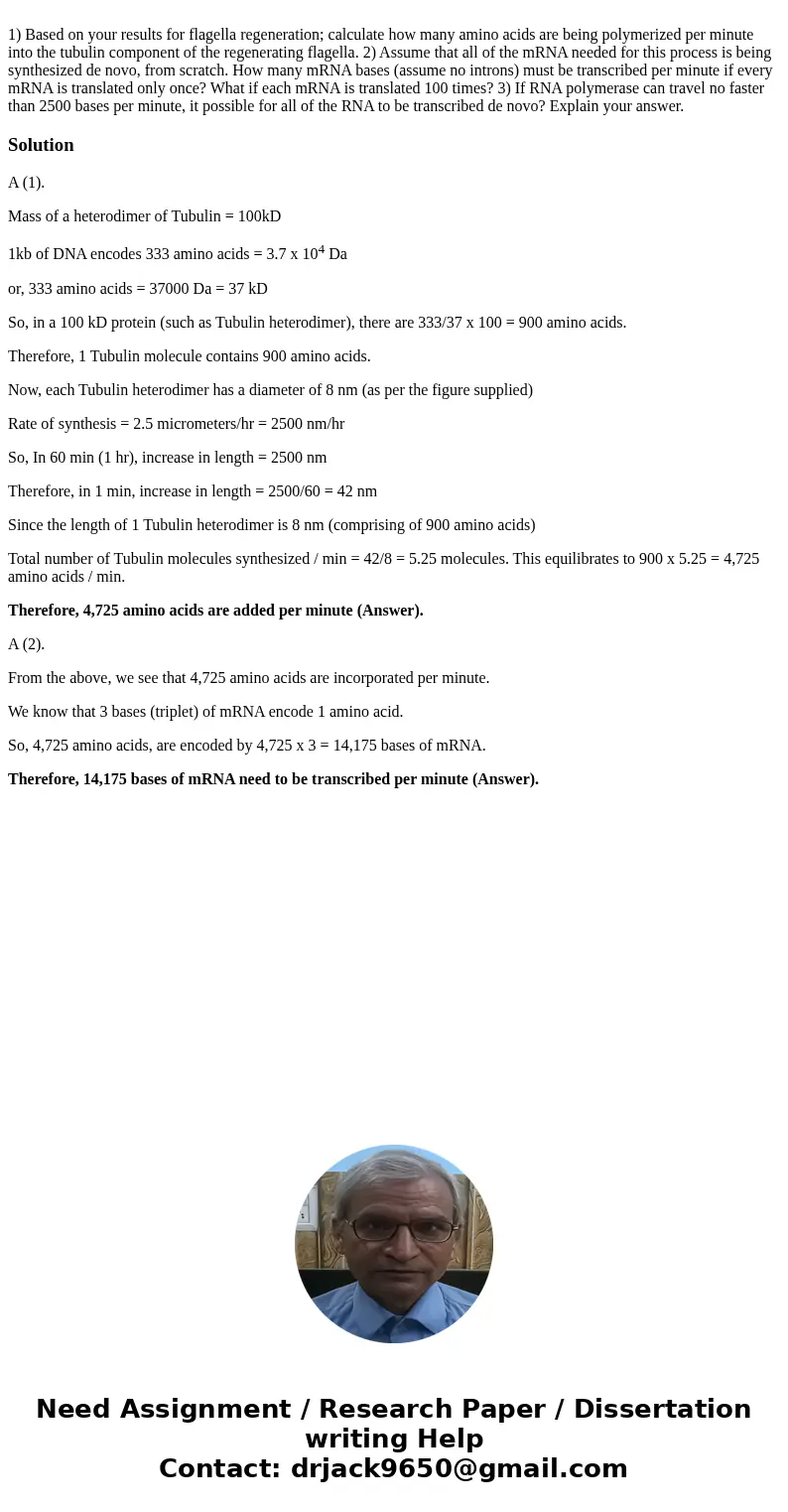1 Based on your results for flagella regeneration calculate
Solution
A (1).
Mass of a heterodimer of Tubulin = 100kD
1kb of DNA encodes 333 amino acids = 3.7 x 104 Da
or, 333 amino acids = 37000 Da = 37 kD
So, in a 100 kD protein (such as Tubulin heterodimer), there are 333/37 x 100 = 900 amino acids.
Therefore, 1 Tubulin molecule contains 900 amino acids.
Now, each Tubulin heterodimer has a diameter of 8 nm (as per the figure supplied)
Rate of synthesis = 2.5 micrometers/hr = 2500 nm/hr
So, In 60 min (1 hr), increase in length = 2500 nm
Therefore, in 1 min, increase in length = 2500/60 = 42 nm
Since the length of 1 Tubulin heterodimer is 8 nm (comprising of 900 amino acids)
Total number of Tubulin molecules synthesized / min = 42/8 = 5.25 molecules. This equilibrates to 900 x 5.25 = 4,725 amino acids / min.
Therefore, 4,725 amino acids are added per minute (Answer).
A (2).
From the above, we see that 4,725 amino acids are incorporated per minute.
We know that 3 bases (triplet) of mRNA encode 1 amino acid.
So, 4,725 amino acids, are encoded by 4,725 x 3 = 14,175 bases of mRNA.
Therefore, 14,175 bases of mRNA need to be transcribed per minute (Answer).

 Homework Sourse
Homework Sourse